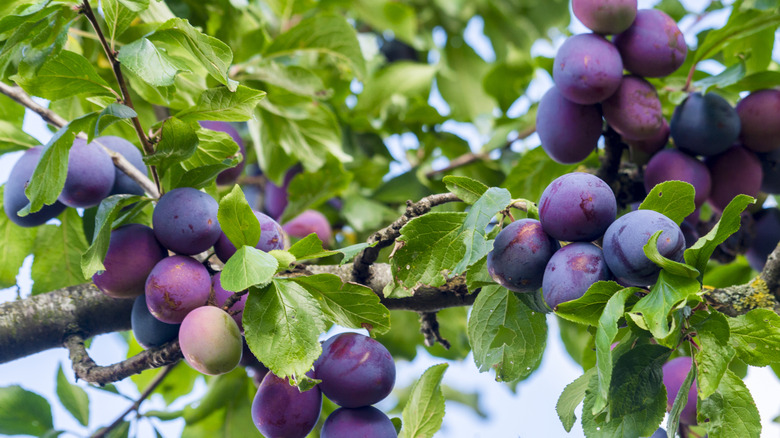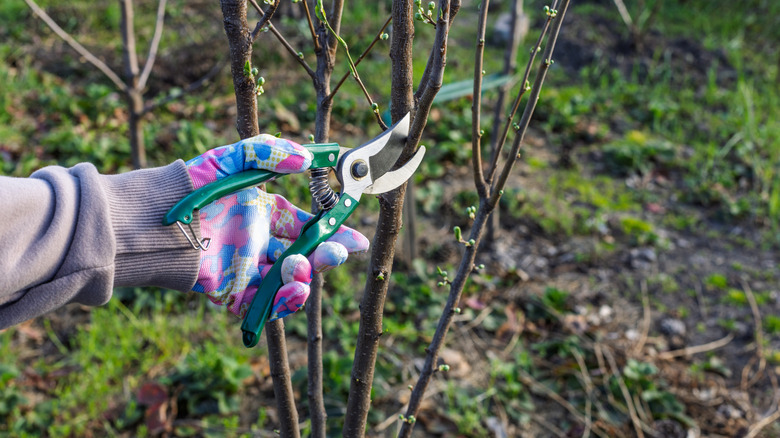The Best Time To Prune Your Plum Tree (& The Best Way To Do It)
Compared to other fruit trees, growing a plum tree in your yard brings big rewards with relatively little effort. But if there's one task that you cannot skip if you want a plum harvest worth bragging about, it's pruning. Most people are shy with the pruners initially; it can feel scary and counterintuitive to chop pieces off of your beloved tree. But it's one of the most helpful things you can do to help your fruit tree grow, as proper pruning makes the tree stronger and more resistant to diseases. It's beneficial for you, too, because the tree will be able to bear more (and better tasting) fruit. Regular pruning also keeps the size of the tree manageable. With plum trees, proper timing and the open-center method are key to pruning success.
Spring or mid-summer are ideal times to prune plum trees. Conversely, you should avoid pruning in the winter because of the risk of diseases entering through the wounds. One disease, silver leaf, causes the leaves to turn silver and then kills the branch. Another disease, called Cytospora canker, affects fruit production and can even kill the tree. In both cases, the diseases are much less of a risk after winter is over.
The right way to prune plum trees
Most plum trees are trained into an open-centered shape, with several main limbs instead of just one trunk. This shape allows more light to reach the branches and promotes air circulation, lowering the risk of diseases. It also makes it easier for you to pick the fruit, while also facilitating stone fruits' natural tendency to spread. Pruning a young plum tree requires training it into this shape by selecting three to five main scaffold limbs, equally spaced around the tree, and removing others that could get in the way. Also, you should remove any buds and suckers that start developing on the lower trunk.
For ongoing pruning, focus on keeping the center open by removing any suckers on the main limbs and thinning out crowded areas. Also remove branches that are dead, broken, or diseased, as well as any that are growing downward instead of up and out, or those tangling or rubbing against others. You can prune mature plum trees with a light hand, but you don't need to be super precise like with some other fruit trees.
Remember to disinfect your tools before pruning and when switching between trees. When removing branches, always cut at the collar, or the widened part at the base of the limb; never leave a stub behind. This eliminates the need to apply any wound dressings, as the tree will heal itself and protect itself from disease.

